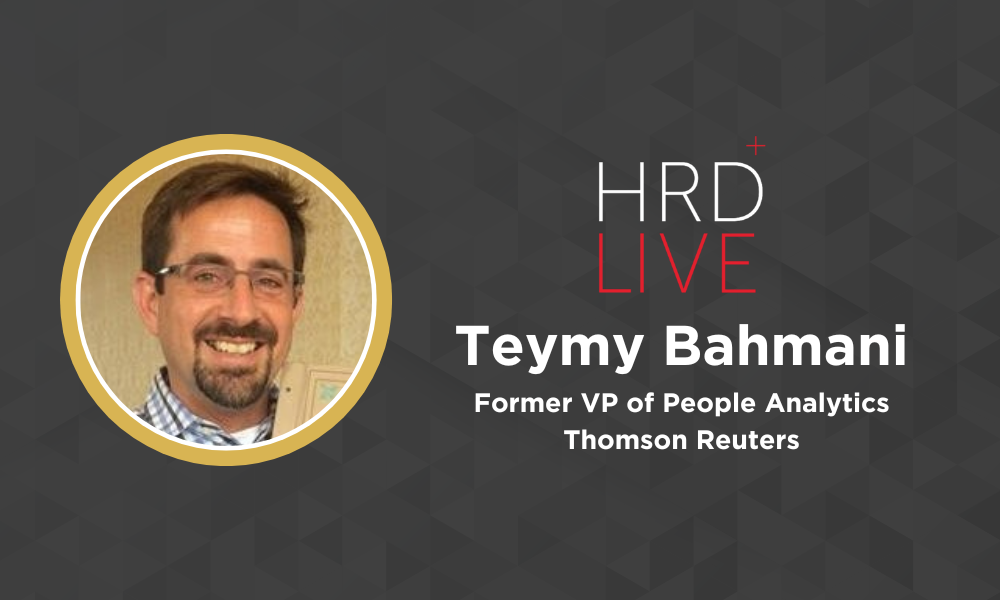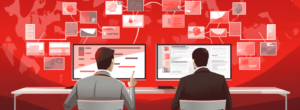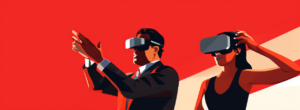Moneyball: What HR leaders can learn from sports analytics
- 5 Min Read
What can people leaders learn from the world of sports? From one-to-one coaching to set pieces, former Thomson Reuters VP of People Analytics Teymy Bahmani shares how HR leaders can emulate high-achieving sports teams and drive organizational performance through analytics.
- Author: Benjamin Broomfield
- Date published: Apr 19, 2023
- Categories

Podcast: Play in new window | Download
Subscribe: RSS
To an HR and People Director or Vice President, Moneyball may not just be an Oscar-nominated movie or a heartwarming David and Goliath story. Although it is a surface-level look into the origins of sports analytics, it offers a host of lessons and insights on creating a data-driven organizational culture.
The final episode in the HRD live mini-series on people analytics features Teymy Bahmani, former VP of People Analytics at Thomson Reuters, and long-time sports fan. Having addressed common barriers to adoption, hybrid working, and actionable insights, we now consider what HR leaders can learn beyond the HR discipline from the world of sports. What benefits can one-to-one coaching bring? How can HR learn from the random incidents that influence sports matches? Why are meetings the equivalent of a set piece?
Join Teymy Bahmani as we unpack his unique analogy and discover how HR leaders can emulate high-achieving sports teams and drive organizational performance through analytics.
What can HR learn from the world of sports analytics?
“It’s really important to steal as many great ideas as you can from other disciplines,” begins Bahmani. In his case, the world of sports is a source of inspiration. Thanks to the maturity of its analytics discipline, it is ripe with lessons and comparisons.
Bahmani begins by calling out a straightforward comparison: Substitutions. In the world of sports, teams track their player’s level of energy and exhaustion, and at the right time, pull them from the pitch for a break. With burnout reaching an all-time high, organizations are not measuring, or not acting, when their employees reach high levels of exhaustion and stress.
“And we don’t separate the score or result from the performance”, he adds. With sports teams increasingly measured against their performance, rather than the result itself, HR Leaders may wish to take a more holistic approach to measure performance based on input, rather than just output.
Sports analytics teams account for randomness
Expanding on this comparison, Bahmani offers the comparison of a Danish sports team.
“There’s a team that said, we’re not going to look at the table, or the traditional structure based on how many points you have. Instead, we’re going to hold the manager accountable for things they can control. Are you playing your youth players? Did you have a great performance, but the scores didn’t work out?”
“From an HR standpoint, we think about strategic workforce planning on 18 months cycles, and even up to five-year time cycles. Why don’t we recognize that random things will happen?”
Just as a random penalty or event in a sports match may influence the outcome, by redefining how employees are held accountable and allowing for randomness, Bahmani argues you can unshackle your workforce from events they have no control over. This freedom gives employees the space to focus on their performance, as opposed to random events, improving results in turn.
Set Pieces
Taking his analogy to further depths, Bahmani advises HR Leaders to position their meetings as set plays. Fluid and fast-paced sports games mirror the increasingly fast pace of business and organizational change. Set pieces offer a moment to pause, assess, and even implement a well-practiced play.
“Meetings are set plays. They are points in time where you have complete control. You know who’s going to be there, at a fixed point in time, and you can prepare. You can be ready for those meetings.”
“There are very few companies that have a meeting culture, or put effort behind it and say ‘this is a place where we can get 5-10% better.”
Although meetings are low-hanging fruit, they are another example of where sports teams study data to determine the best course of action for the event to follow. Bahmani argues these marginal gains will stack up across each touchpoint of employee experience to drive improved business results.
Timestamps
00:10 – Introduction
01:00 – What inspired the comparison between sports analytics and HR or people analytics?
02:54 – Let’s talk through a few of the links you’ve drawn. Firstly, they both have a history of relying on gut and tradition. Can you talk us through that comparison and what HR can learn from the world of sports?
05:06 – Sports teams are, from the top down, constantly taking data-informed decisions. How can HR leaders create a similar culture within their organization?
08:06 – Why should HR leaders be aware of the role of randomness and not rely on analytics for perfection?
10:53 – Each team has a ‘style of play’. What does a ‘style of play’ look like in practice for HR?
12:53 – Many sports teams will have a 1-1 ratio between players to coaches. Is this something for HR and People teams to aspire to?
14:43 – Why is it important for HR leaders draw comparisons from sports or other areas of popular culture?








